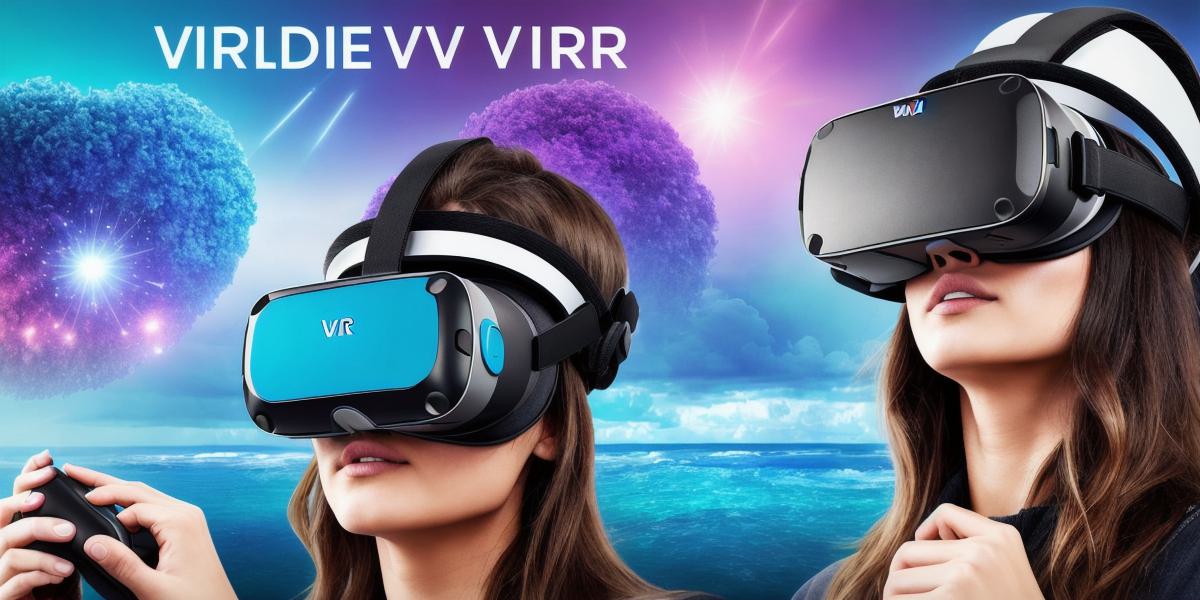Introduction
Virtual Reality (VR) technology has come a long way since its inception, and it’s now on the brink of becoming mainstream. With advancements in hardware and software, VR is becoming more accessible, affordable, and practical for various industries. In this article, we will explore whether VR is worth investing in as a developer, and provide you with valuable insights to help you make an informed decision.
Is VR Worth It? The Pros and Cons
Pros:
- Enhanced User Experience: VR offers a fully immersive experience that can transport users into different worlds and dimensions, providing them with a unique and memorable experience. This technology has the potential to revolutionize various industries such as gaming, education, healthcare, and more.
- Increased Engagement: VR can create an engaging environment that encourages interaction and participation, making it ideal for marketing campaigns, training programs, and other applications where user engagement is crucial.
- Cost-Effective: With the rapid advancements in hardware and software, VR technology has become more affordable than ever before. Additionally, the ability to reuse content across different platforms can help developers save money and time.
- Competitive Advantage: By incorporating VR technology into your products or services, you can gain a competitive advantage over other businesses that haven’t yet adopted this technology.
Cons:
- High Cost: The cost of VR hardware and software can be prohibitively expensive for small businesses or startups. Additionally, the need for specialized equipment and expertise can make it challenging to implement VR solutions effectively.
- Limited Accessibility: Not all users have access to VR technology, making it difficult to reach a wider audience. Furthermore, some users may experience motion sickness or other adverse effects when using VR.
- Complexity: VR development can be complex and time-consuming, requiring specialized skills and expertise. Additionally, integrating VR into existing systems can be challenging, especially for older hardware and software.
- Ethical Concerns: There are ethical concerns surrounding the use of VR technology, particularly in areas such as gaming and entertainment. The potential for addiction and the impact on user mental health must be carefully considered before investing in VR solutions.
Case Studies: Successful VR Applications
- Virtual Store Tours: Lowe’s has implemented a VR experience that allows customers to virtually tour their stores, providing them with a better understanding of the layout and product offerings. This has increased customer satisfaction and reduced return rates.
- Medical Training: The University of California San Francisco (UCSF) has developed a VR simulation that allows medical students to practice surgical procedures in a safe and controlled environment. This has improved student performance and reduced the risk of errors during real-life surgeries.
- Marketing Campaigns: Coca-Cola’s "Share a Coke" campaign utilized VR technology to allow consumers to personalize their own Coke bottle, resulting in increased brand awareness and sales.
Expert Opinions
- "VR is no longer just a futuristic technology; it’s becoming an essential tool for businesses looking to engage customers and employees," says John Carmack, co-founder of id Software.
- "VR has the potential to revolutionize industries such as education, healthcare, and more, but it requires careful consideration and planning to ensure its successful implementation," says Dr. Shannon McGregor, associate professor of virtual reality at the University of Maryland.
Summary
In conclusion, VR technology is becoming increasingly accessible and practical for various industries. While there are pros and cons to consider, the potential benefits outweigh the drawbacks in terms of enhanced user experience, increased engagement, cost-effectiveness, and competitive advantage. By carefully considering the potential applications and risks associated with VR, developers can make an informed decision about whether to invest in this technology for their business needs.
